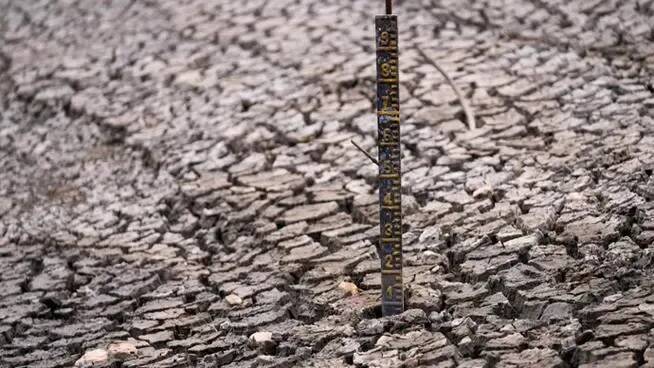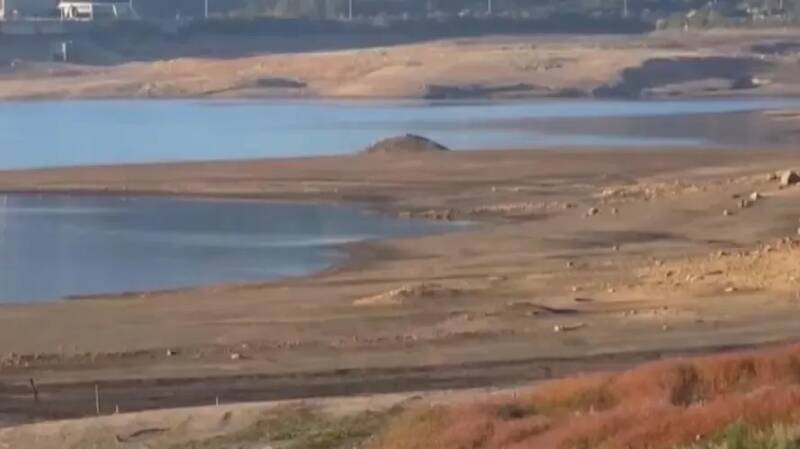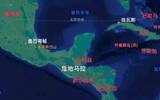The drought is serious! The water level of reservoirs across the country in Colombia is less than 30%
It is understood that the Colombian state is located in the tropics of the equatorial region, the annual December to February is the dry season in the country, but due to the influence of El Ni ñ o, aggravated the drought.
As early as January this year, Colombian local media reported that Colombia was affected by El Ni ñ o, leading to a serious drought problem. Colombian President Pedro said on January 24 that the country had entered a state of natural disasters.
As of April, the drought in Colombia has continued and its impact has intensified, with water shortages and falling water levels in several reservoirs in Colombia, which has affected both water supply and power generation. According to EPM, one of Colombia's largest suppliers of public electricity, water and natural gas, water supplies will be reduced in Santander and Antioquia.
Until recently, the Colombian government released a panoramic picture of the water level of the national reservoir, the average water level of the reservoir is less than 30% of the normal value, and the average water level of the reservoir has dropped to 29.96% of the normal water level, approaching the critical point of 27%. As a result, water restrictions were imposed earlier in Bogota, the capital of Colombia, but the government will wait for the future and will not rule out the implementation of a water distribution system throughout the country if there is insufficient rainfall.

In fact, Colombia is rich in freshwater resources, but some departments of the country's government do not make good use of the resources. According to the analysis of some experts, Colombia is the country with the most abundant water resources in Latin America, but it is also the country that wastes the most water, especially in the establishment and maintenance of crops, all because agriculture is an important pillar of Colombia's economy, and the main agricultural products are coffee, bananas and flowers. These agricultural products need a lot of water in the process of growing, and 70% of the water in the country is used in agriculture.
In addition, the current level of the Chingaza reservoir system in the central part of the country is 45.27% of the effective volume canned level, which limits current water consumption, and many experts call on agricultural industries such as coffee and bananas to adopt more effective irrigation techniques to optimize water use instead of using it at will.

In addition, according to data provided by the Colombian National Planning Agency (DNP), 4 litres of water out of every 10 litres of water in the country is lost due to spills or leaks of water tanks, deterioration of the pipeline network, illegal connections or measurement errors. And there are serious water pollution, deforestation and other problems.
In response, the Colombian president said in an earlier post on the social platform that he had ordered "major reforms" to ensure that the country had access to clean water within the next 30 years.
However, there is also good news. According to the Colombian Ministry of Environment and the Institute of Hydrology, Meteorology and Environment (IDEAM), the rainy season will enter in mid-late April, and it will rain soon, which is expected to alleviate the current drought, but it is likely to be followed by La Nina and heavy rains. People in the coffee industry said that although heavy rainfall can ease the drought, excessive rainfall and low temperatures will affect the growth of coffee, and farmers need to be prepared for it.
Important Notice :
前街咖啡 FrontStreet Coffee has moved to new addredd:
FrontStreet Coffee Address: 315,Donghua East Road,GuangZhou
Tel:020 38364473
- Prev

MANNER barista adopts stray cats and turns them into a cat cafe!
▲ Click attention| Daily Boutique Coffee Culture Magazine Coffee Workshop "Sucking cats is great for a while, but it's always cool. "Nowadays, more and more young people regard" sucking cats "and" rubbing dogs "as one of the great joys of life, and the number of pet owners is increasing day by day. In daily life, if a store not only has a comfortable environment and good coffee,
- Next

Guatemala| Introduction to the coffee producing area selection series of coffee beans
Guatemala Guatemala In the Americas, there is a country that is one of the centers of ancient Indian and Mayan culture. This country is the Republic of Guatemala (La República de Guatemala), with a total area of 108,900 square kilometers.
Related
- Is espresso stored overnight in the refrigerator harmful to your body? Is frozen coffee better than freshly ground coffee?
- What parameters and proportions of water temperature should be used to grind and brew fresh coffee beans? Why can't I drink freshly roasted coffee right away?
- Customers have "changed" Manner's new products! Shop assistant: Please don't mess around!
- Remove sockets in customer areas at Starbucks stores?! Netizen: I won't go if I really tear it down
- What is the difference between the taste steps of sun-dried coffee and washed coffee? Why is sun-cured coffee sweeter and washed coffee sour?
- The recipe for salty grapefruit dirty is revealed! Coffee Festival salty grapefruit dirty coffee making materials parameters ratio milk share!
- How about the flavor of Sunlight 74158 at Sidamo Banshaha Mathieu Processing Factory in Ethiopia? 74158 Share the proportion of coffee brewing parameters!
- What effect does Italian American coffee with filter paper have? Will coffee taste better if it is put on filter paper at the bottom of the powder bowl?
- What is the color difference in coffee beans? What are the characteristics of honey processed coffee beans? Why are the anaerobically treated coffee beans uneven in color?
- How does novice Xiaobai quickly get started and make coffee? Newbies learn to make coffee by hand and share the specific steps and process process!

